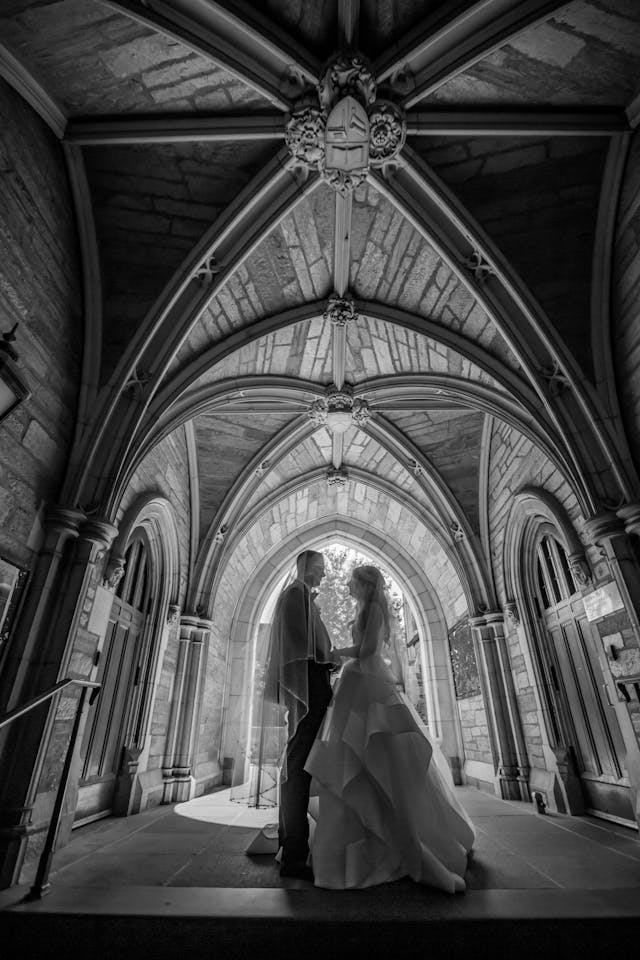

Estimated Reading Time:
(9 minutes)
A few years back, I sat across from a couple in their third round of budget edits, champagne flutes in hand and spreadsheets glowing on the screen. They were confident—excited, even. “We’ve got everything locked in,” the bride said. “Venue, catering, photo, music… we’re under budget!”
Three weeks later? They were $6,000 over. What happened? The hidden costs showed up.
And I get it—wedding planning is an endless series of decisions, and it’s easy to overlook the little things. But those “little things” can stack up fast, and they don’t always announce themselves in advance. That’s why I always tell my couples to budget for the wedding they think they’re planning—plus the one they don’t see coming. Because there are certain costs that catch almost everyone off guard… unless you know where to look.
Let’s walk through the ones that matter most.
First off: taxes and service fees. These aren't glamorous line items, but they can quietly devour your budget if you’re not careful. A vendor might quote you $3,500 for catering, but forget to mention that the final bill includes 8.25% tax, an 18% service fee, and a 4% administrative charge. Suddenly, your “great deal” is closer to $4,400. Always ask vendors for a final estimate with all fees included, and if the quote feels unusually low, be cautious—it might not be the whole story.
Next comes venue add-ons. Even if your venue seems all-inclusive, you’d be amazed how often things like chairs, upgraded linens, lighting, or ceremony setup cost extra. And if you’re planning an outdoor wedding? Factor in tent rentals, flooring, heating or cooling systems, restroom trailers, and backup plans for rain. Weather contingency plans aren’t free—but not having one can cost you more in the long run.
Overtime charges are another big one. If your DJ, photographer, or shuttle company stays even 30 minutes past the agreed end time, you may be hit with steep per-hour fees. I’ve seen vendors charge $300–$600 per hour for overtime, and it’s often non-negotiable once the clock starts ticking. Build in a 30-minute buffer in your schedule or talk to your vendors about their grace period upfront.
Then there’s the matter of attire alterations. I’ve watched many brides fall in love with a gown at the boutique only to find out later that alterations aren’t included—and they aren’t cheap. A basic hem and bustle might run $250. A custom fit with bodice restructuring, lining adjustments, and multiple fittings? Easily $500 or more. Bridesmaids and groomsmen will face their own fitting charges, and it’s rare for a suit or dress to fit perfectly right off the rack.
Speaking of things not fitting—postage. Stationery companies will give you the design cost for invitations, but rarely include the price of stamps. Oversized or square envelopes require extra postage, and with RSVP cards, details inserts, and outer and inner envelopes, you could be looking at several hundred dollars just to get your invites out the door. Don’t forget thank-you notes afterward, either. Every mailed piece adds up.
Another sneaky one? Beauty trials. Hair and makeup trials are often priced separately from day-of services, and they’re absolutely worth doing. But many couples forget to budget for them. If you’re planning engagement photos, bridal portraits, or a rehearsal dinner glam session, those beauty services won’t come cheap.
Meals for vendors are another often-overlooked expense. If you’ve got a team of 8 vendors on-site for more than 6 hours—photographers, planners, DJs, assistants—you’ll need to feed them. It’s common courtesy, and sometimes it’s required in their contracts. A separate vendor meal option from your caterer is usually available, but that’s still $30–$50 per person you’ll need to plan for.
Also—don’t forget about permits and insurance. Some venues (especially outdoor or public spaces) require you to pull a permit for noise, setup, or even drone photography. Others require liability insurance, which your planner may ask you to purchase separately. It’s not usually expensive, but it is something most couples don’t find out about until late in the game.
And then there are the extra touches that don’t feel like “extras” at all once the big day is close. Think welcome bag delivery fees, dress steaming, transportation tips, bachelorette party costs that bleed into the wedding weekend, extra decor you decide you “must have,” or even late-night snacks because you realize dinner ends too early. These things often creep in at the last minute, and they rarely get canceled once you’ve emotionally committed to them.
One couple I worked with added $2,000 in last-minute changes the week of their wedding—custom signage, an espresso cart, and a rush order on umbrellas for unexpected rain. None of those were in the original budget, but they couldn’t imagine the day without them once the vision had taken hold. That’s why I always recommend building a contingency line item—5 to 10% of your total budget—just for unexpected expenses. Because trust me: there will be some.
My Advice
Hidden costs aren’t really hidden if you know where to look—and now, you do. Make peace with the fact that no matter how organized you are, your wedding budget will shift a little as the big day approaches. That’s not failure—it’s reality. The smartest thing you can do is leave room. Pad your numbers. Ask vendors for “all-in” pricing. Don’t fall for artificially low quotes that balloon later. And keep a separate list for anticipated add-ons—alterations, postage, beauty trials, meals—so they’re not surprises when they show up. Weddings are an investment. Not just in money, but in joy, celebration, and shared memory. Planning for those surprise costs ahead of time means you’ll spend less energy stressing—and more time soaking it all in.
– Bailey J.
Related Blogs You’ll Love:
How Do We Set a Realistic Wedding Budget?
Can We Save Money and Still Have a Great Wedding?